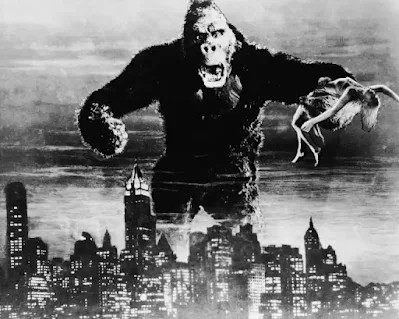Emerging from the golden age of Hollywood, King Kong (1933) stands as a testament to the enduring power of storytelling and the visionary artistry of filmmaking.
Directed by Merian C. Cooper and Ernest B. Schoedsack, this adventure fantasy follows the captivating tale of an enormous ape, King Kong, discovered on a primeval island inhabited by prehistoric creatures.
Captured and transported to New York City, Kong becomes a spectacle, exploited for profit and paraded as the "Eighth Wonder of the World."
However, as Kong escapes his confinement and rampages through the city, the film explores themes of humanity's hubris, the exploitation of nature, and the profound bond between two unlikely souls.
Captivating Narrative and Sympathetic Characters
King Kong's narrative simplicity belies its profound impact on audiences. The film deftly interweaves elements of adventure, horror, and romance, creating a captivating cinematic experience.
Kong's plight evokes sympathy and empathy, as he is portrayed as a creature of immense power yet gentle nature, yearning for freedom and companionship.
Ann Darrow (Fay Wray), the object of Kong's affection, serves as a beacon of humanity amidst the chaos, forming a deep connection with the giant ape.
Their relationship challenges the audience's perceptions of beauty and the boundaries between species.
Their relationship challenges the audience's perceptions of beauty and the boundaries between species.
Groundbreaking Special Effects
At the time of its release, King Kong revolutionized filmmaking with its pioneering stop-motion animation techniques. The meticulous craftsmanship of Willis O'Brien brought Kong to life, imbuing the towering ape with a sense of realism and emotion that captivated audiences.
The film's visual effects, still impressive today, serve as a testament to the ingenuity and artistry of early filmmakers.
Enduring Legacy and Cultural Impact
King Kong's legacy extends far beyond its technical achievements. The film has left an indelible mark on popular culture, inspiring countless remakes, adaptations, and homages.
The iconic image of Kong atop the Empire State Building, clutching Ann Darrow in his hand, stands as a symbol of cinematic storytelling and the enduring power of the human imagination.

